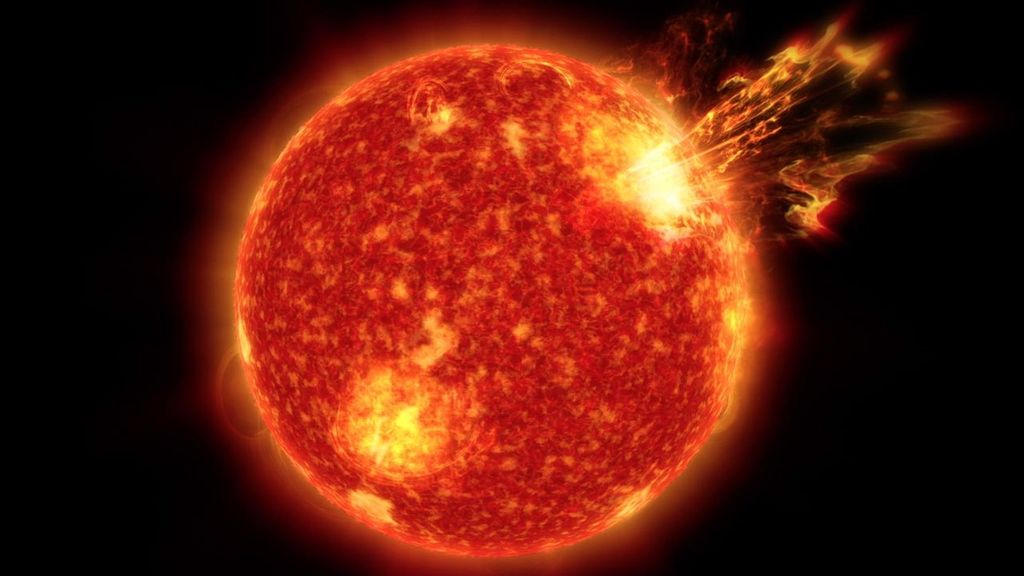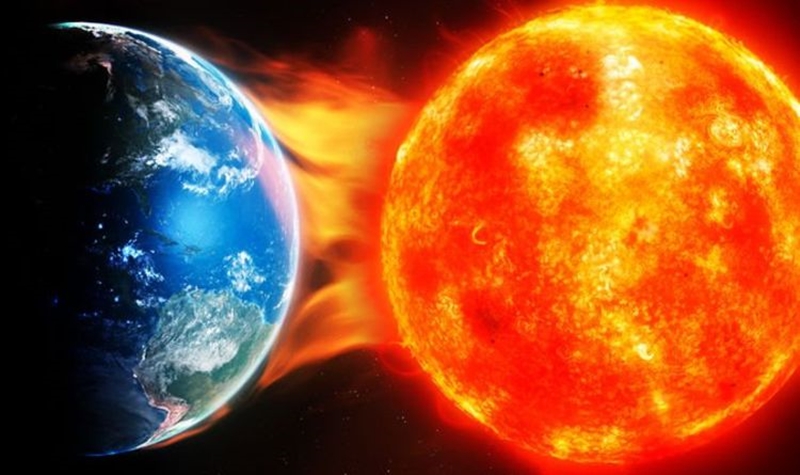The Sun’s Expansion: Implications for Life on Earth and Beyond

The Sun’s Expansion, the star at the center of our solar system, is a fascinating celestial body that plays a crucial role in sustaining life on Earth. While it may appear as a constant and unchanging entity, scientific evidence suggests that the Sun is gradually expanding over time. In this article, we will explore the phenomenon of the Sun’s expansion, its implications, and what it means for the future of our solar system.

Beyond the Horizon: The Sun’s Journey to Becoming a Red Giant
1. Understanding Stellar Evolution:
To comprehend why the Sun is growing, we must delve into the science of stellar evolution. Like all stars, the Sun undergoes a life cycle characterized by various stages of fusion and nuclear reactions in its core. These processes generate the immense energy that radiates outward, providing heat and light to the planets orbiting around Tvtoto.
2. The Main Sequence Phase:
For much of its existence, the Sun has been in a stable phase known as the main sequence. During this period, hydrogen atoms in the Sun’s core fuse together to form helium, releasing energy in the process. This fusion process serves as the primary source of the Sun’s energy and luminosity.
3. Hydrogen Depletion and Stellar Expansion:
As the Sun consumes its hydrogen fuel over millions to billions of years, its core begins to undergo changes. With less hydrogen available for fusion, the core contracts and heats up, leading to an increase in pressure and temperature. This, in turn, causes the outer layers of the The Sun’s Expansion outward, resulting in an overall increase in its size.
4. Implications for the Solar System:
The Sun’s expansion has significant implications for the planets within our solar system, including Earth. As the Sun grows larger and hotter, its outer atmosphere extends farther into space, potentially affecting the orbits and climates of the planets. Over time, the increasing luminosity of the Sun could lead to changes in Earth’s climate, with potential consequences for life on our planet.
5. Future Evolution and Fate of the Sun:
While the Sun’s expansion may seem gradual on human timescales, it has profound implications for its long-term evolution. Eventually, the Sun will exhaust its hydrogen fuel entirely and transition into later stages of stellar evolution, culminating in the formation of a red giant. During this phase, the The Sun’s Expansion dramatically, engulfing the inner planets, including Earth, in its outer layers.
Conclusion:
The Sun’s gradual expansion is a natural consequence of its evolution as a star. While it may occur over immense timescales, this phenomenon has far-reaching implications for the future of our solar system. By studying the Sun’s growth and evolution, scientists gain valuable insights into the nature of stars and the dynamics of the cosmos. As we continue to explore the mysteries of the universe, the Sun remains a captivating subject of scientific inquiry and wonder.

The Sun, our nearest star, holds a central position in the cosmos and profoundly impacts life on Earth. As scientific research suggests, the Sun’s expansion over time carries significant implications for humanity. In this article, we will explore the effects of the Sun’s growth on human civilization, including potential challenges and adaptations.
Understanding Solar Expansion:
The Sun, like all stars, undergoes a natural evolution characterized by changes in its size, luminosity, and composition. Over millions of years, as the Sun consumes its hydrogen fuel, its core contracts and heats up, leading to an outward expansion of its outer layers. This gradual process, while imperceptible in human timescales, has far-reaching consequences for our planet and its inhabitants.
Climate Change and Environmental Impact:
One of the primary impacts of the Sun’s expansion on humanity is its influence on Earth’s climate and environment. As the Sun grows larger and hotter, its increased luminosity can contribute to changes in atmospheric conditions, including shifts in temperature patterns, precipitation, and weather phenomena. These alterations may exacerbate existing climate change trends and pose challenges for agriculture, water resources, and ecosystems.
Space Exploration and Interplanetary Travel:
The Sun’s expansion also affects humanity’s efforts in space exploration and interplanetary travel. As the Sun’s outer atmosphere extends farther into space, it creates additional hazards for spacecraft and astronauts, such as heightened radiation levels and solar flares. Engineers and scientists must develop advanced technologies and protective measures to mitigate these risks and ensure the safety of future space missions.
Energy Resources and Renewable Technologies:
On a more positive note, the Sun’s expansion presents opportunities for harnessing its abundant energy resources. Solar power, derived from the Sun’s radiation, offers a sustainable and renewable alternative to traditional fossil fuels. With advancements in solar technology and infrastructure, humanity can transition towards cleaner energy sources and reduce reliance on environmentally harmful practices.
Cultural and Societal Perspectives:
The Sun holds profound cultural and societal significance across diverse civilizations and traditions. Its expansion serves as a reminder of humanity’s place within the vastness of the cosmos and the interconnectedness of all life on Earth. By studying the Sun’s evolution, humanity gains a deeper understanding of the universe and our role in shaping its future.
Conclusion:
The Sun’s expansion carries both challenges and opportunities for humanity. While it may pose risks to our environment and space exploration endeavors, it also offers prospects for sustainable energy solutions and deeper cosmic insights. As we navigate the complexities of a changing solar system, it is essential to prioritize scientific research, innovation, and global collaboration to address the multifaceted impacts of the Sun’s evolution on human civilization.
If the Sun’s expansion, it would have significant impacts on the entire Solar System and the planets orbiting around it, including Earth. This process is a part of the life cycle of stars like the Sun, which at some point will become a red giant before eventually undergoing a supernova.

Here are some of the potential effects if the The Sun’s Expansion:
- Increased Heat: As the Sun’s expansion, its luminosity would also increase significantly. This would lead to higher temperatures on Earth and other planets within the Solar System. Areas that are currently habitable might become too hot for life as we know it.
- Changes in Orbits: the Sun’s expansion would alter the gravitational dynamics within the Solar System. Planets may experience changes in their orbits, potentially disrupting the delicate balance that currently exists.
- Atmospheric Changes: The increased solar radiation from a larger Sun could lead to significant changes in Earth’s atmosphere. This might result in alterations to weather patterns, increased evaporation rates, and changes in precipitation distribution.
- Potential Loss of Atmosphere: The outer layers of the Sun could extend far enough to reach Earth’s atmosphere, leading to increased atmospheric escape. Over time, this could result in the loss of lighter gases such as hydrogen and helium from Earth’s atmosphere.
- Endangering Life on Earth: The combination of increased heat, changes in atmospheric composition, and altered orbits could pose a serious threat to life on Earth. Many species may struggle to adapt to the new environmental conditions, leading to mass extinctions.
- Impact on Technology: The expansion of the Sun could also affect technology, particularly satellites and space-based infrastructure. Increased solar radiation could interfere with communication systems, disrupt GPS signals, and damage sensitive electronics.
Long-Term Evolution of the Sun: Ultimately, the expansion of the Sun is a natural part of its evolution as a star. As it continues to burn through its hydrogen fuel, it will eventually transition into a red giant before shedding its outer layers and forming a planetary nebula.
Overall, while the expansion of the Sun is a gradual process that will occur over millions of years, it could have profound and far-reaching effects on life within the Solar System, including here on Earth.
Read More Article About “Frikadeller Culinary Traditions: Pleasures of Danish Cuisine“




Leave a Comment